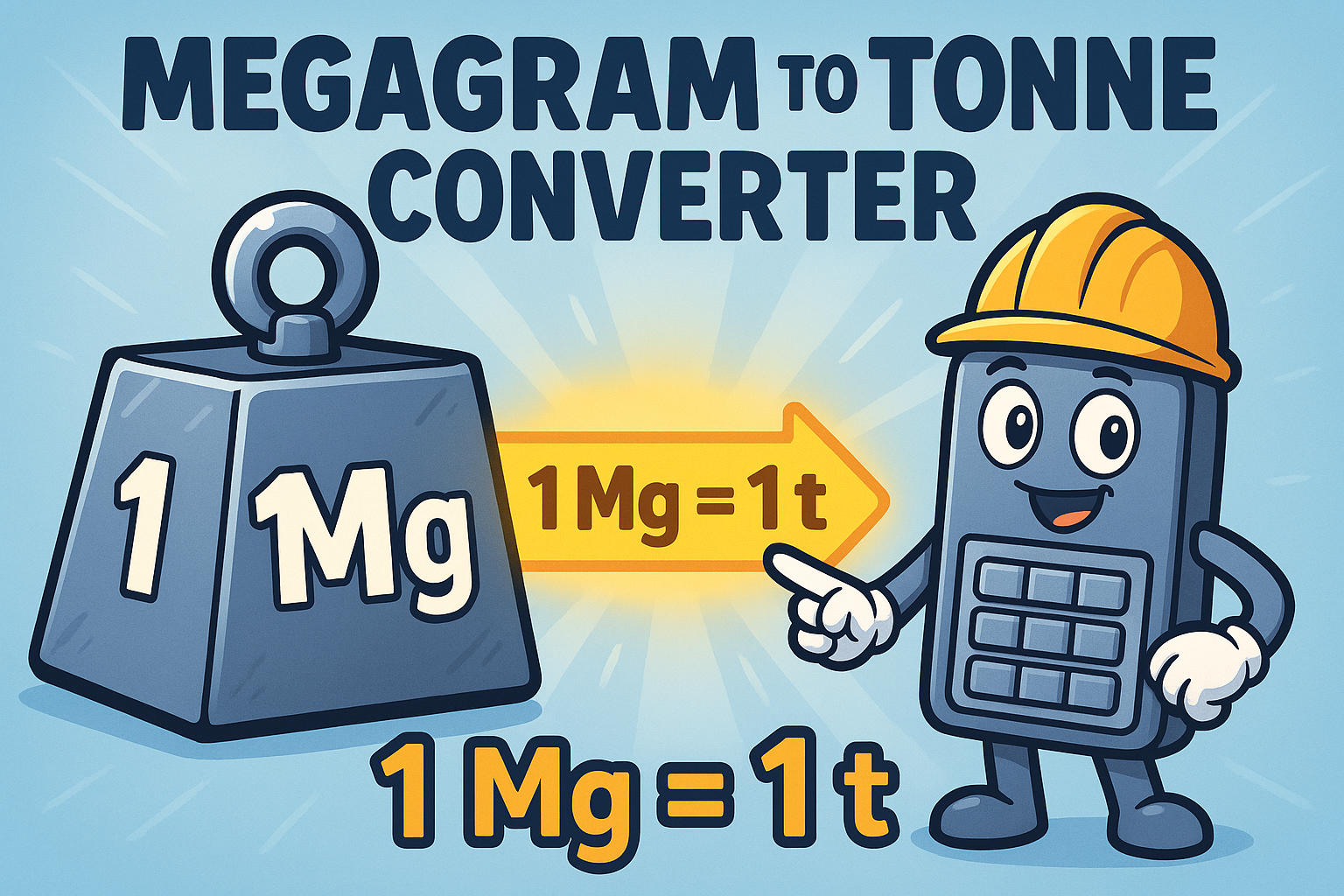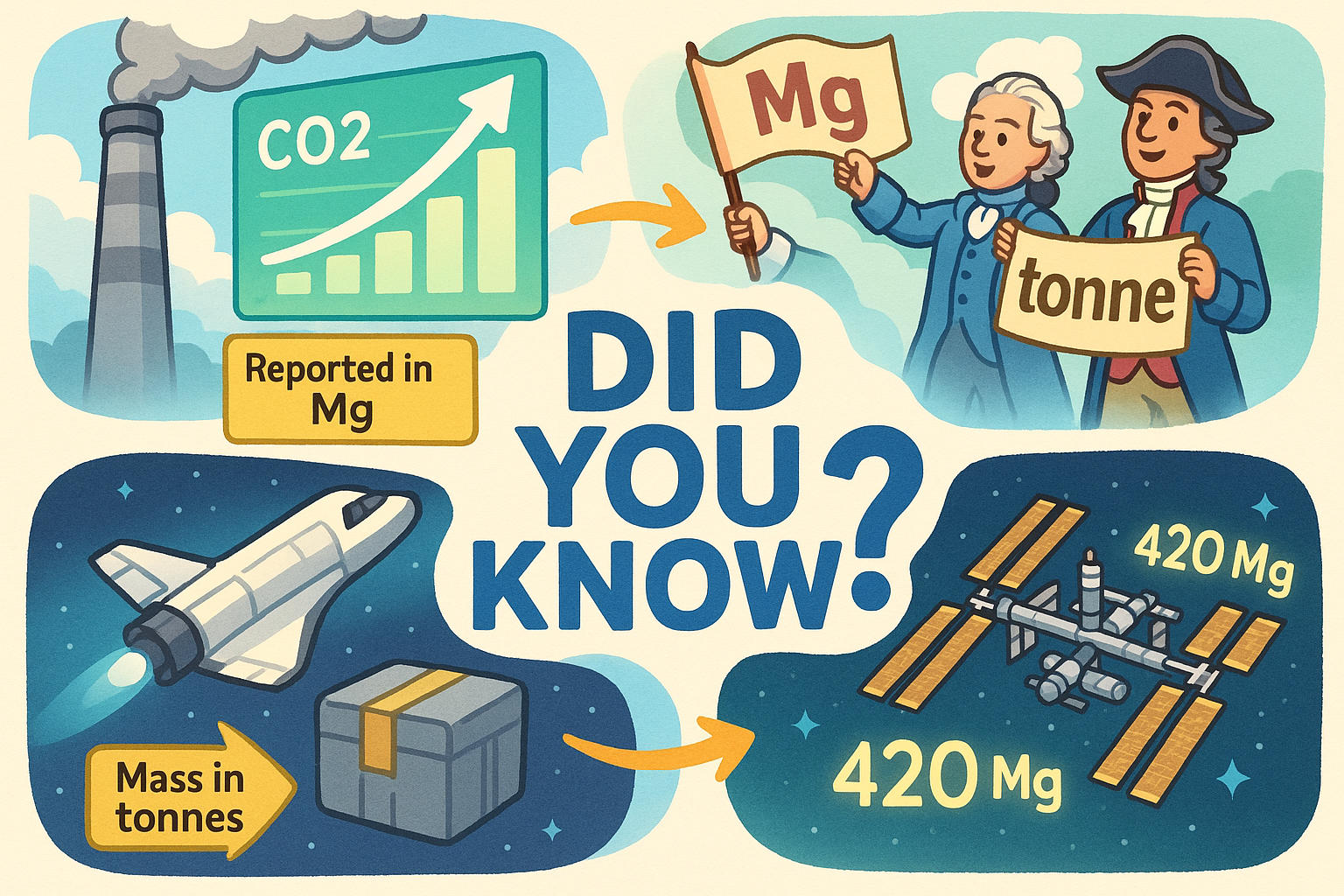megagram to tonne - How to convert mg to t
Whether you're managing industrial shipments, working on an academic report, or calculating heavy loads for construction, understanding the conversion between megagram (mg) and tonne (t) is essential. Let’s explore both units, how to convert them, and some fascinating trivia and history tied to their use.

Megagrams and Tonnes - What do you need?
A megagram (Mg) is a metric unit of mass equal to 1,000 kilograms, or 1 metric ton. Though technically accurate and part of the International System of Units (SI), the term “megagram” is not commonly used in daily life. Instead, many prefer using tonne, especially in Europe and other metric-using regions.
The abbreviation "mg" can be confusing, as it's commonly used for milligram, a very small unit. But in this context, "Mg" with a capital M refers to megagram. Be careful with case sensitivity!
A tonne (t), also known as a metric ton, is a unit of mass equal to 1,000 kilograms or approximately 2,204.62 pounds. It’s the standard unit of weight in most countries that use the metric system. The tonne is widely used in transportation, international shipping, construction, and environmental reports.
Need help with other weight units like pounds or ounces? Explore our full weight converter tool.
How to Convert Mg to T
Converting megagram to tonne is incredibly straightforward:
1 Mg = 1 tonne
For example:
-
5 Mg, it equals 5 tonnes
-
12.5 Mg, it equals 12.5 tonnes
It’s a 1:1 conversion ratio, which is rare and useful — no complex math needed.
This 1:1 ratio is one of the easiest in our full set of conversion tools.
Did You Know?
-
The megagram is rarely used in conversation but commonly appears in scientific and environmental reports—especially when reporting CO₂ emissions in megagrams instead of tonnes. It's used by the EPA and UN climate reports to avoid confusion with the "ton" in imperial units.
-
The metric tonne was officially adopted in 1795 in France during the metrication revolution. It became a unifying standard across Europe as countries began dropping local units like “quintals” or “stones.”
-
In the movie "Interstellar" (2014), cargo and ship weight are often referenced in tonnes to emphasize realism in spacecraft mass physics and resource limits for space travel.
-
The International Space Station (ISS) weighs around 420 Mg, or 420 tonnes — making “megagram” a practical way to express the enormous scale in scientific contexts.

From D-Day to Freight Yards
During World War II, the success of Operation Overlord (the D-Day invasion) heavily depended on the Allied Forces’ ability to transport massive amounts of supplies. Over 1.5 million tonnes of equipment, fuel, and food were delivered to the Normandy beaches in just a few months. Logistics planners calculated every delivery down to the tonne, ensuring fuel reached tanks and rations got to soldiers without fail.
This event cemented the tonne’s role in global military logistics, showcasing how vital standard units of mass were to international cooperation and strategy.
Conclusion
Converting megagram to tonne (mg to t) is as simple as it gets — a direct 1:1 ratio. But behind that simplicity lies a world of engineering, logistics, and history that depends on these powerful units of mass. Whether you're a student, scientist, or logistics manager, Jetcalculator’s tool helps you get the numbers right every time.
For everything else, check out our all-in-one conversion tools page.

